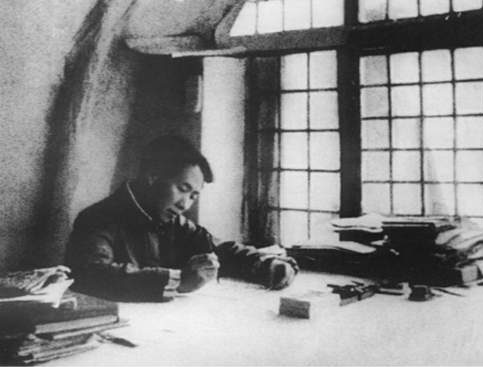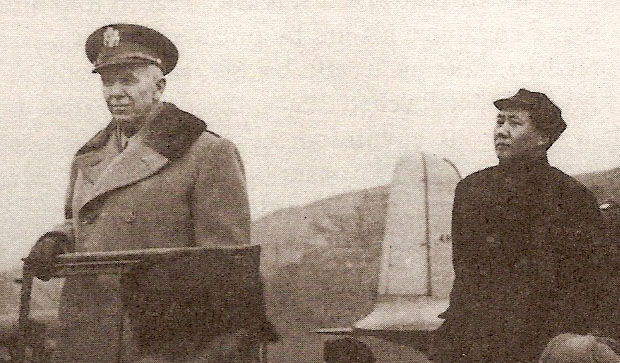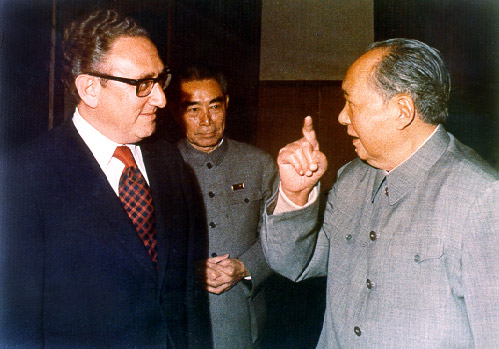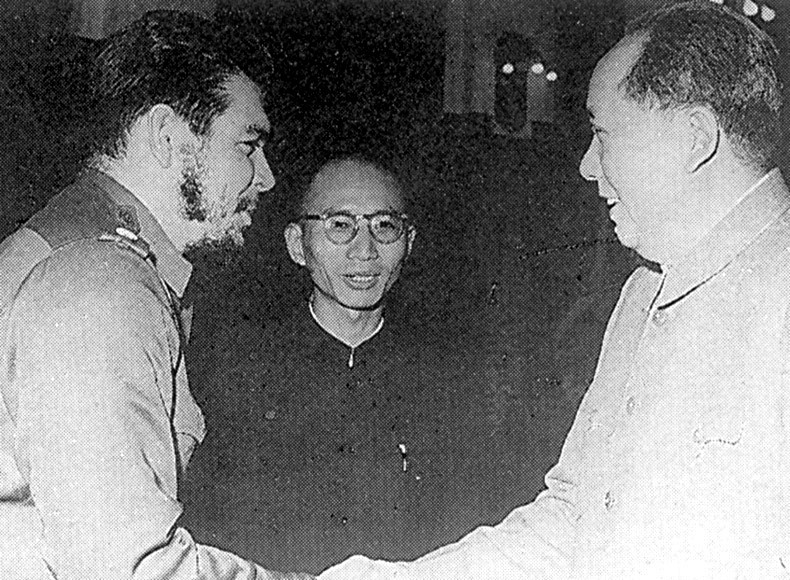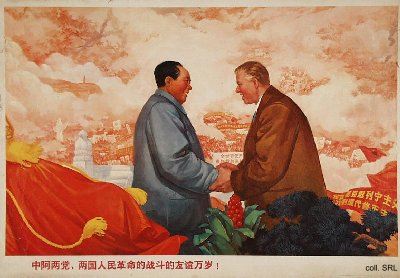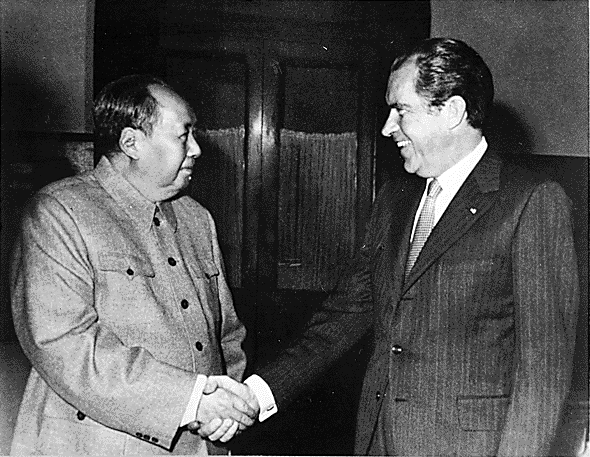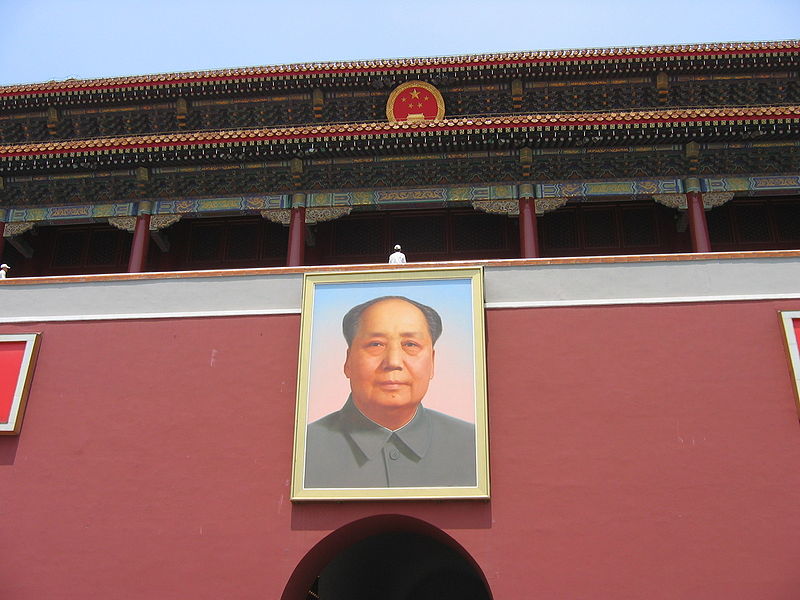<Back to Index>
- Mathematician Charles Babbage, 1791
- Novelist Henry Valentine Miller, 1891
- 1st Chairman of the People's Republic of China Mao Zedong, 1893
PAGE SPONSOR
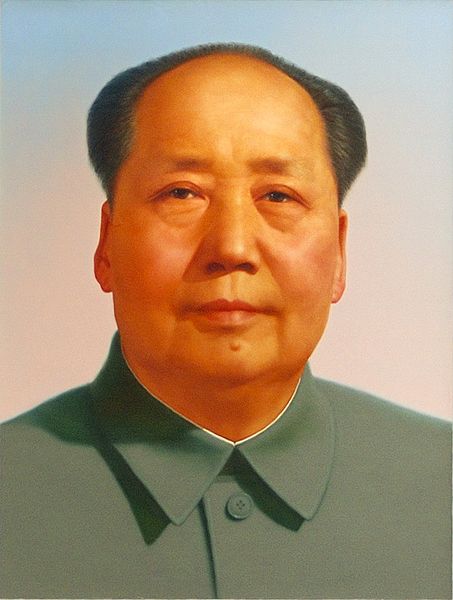
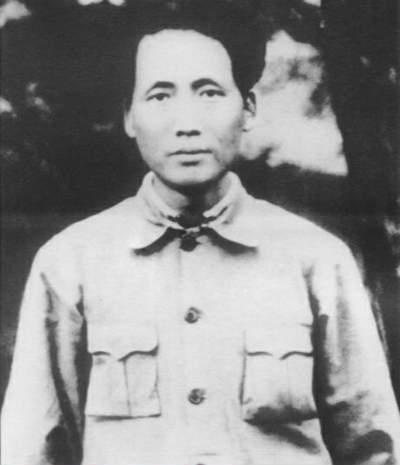
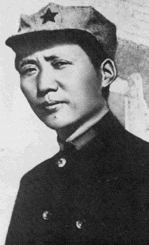
Mao Zedong (December 26, 1893 – September 9, 1976) was a Chinese revolutionary, political theorist and communist leader. He led the People's Republic of China (PRC) from its establishment in 1949 until his death in 1976. His theoretical contribution to Marxism-Leninism, military strategies, and his brand of Communist policies are now collectively known as Maoism.
Mao
remains a controversial figure to this day, with a contentious and
ever-evolving legacy. He is officially held in high regard in China as
a great revolutionary, political strategist, military mastermind, and
savior of the nation. Many Chinese also believe that through his
policies, he laid the economic, technological and cultural foundations
of modern China, transforming the country from an agrarian society into
a major world power. Additionally, Mao is viewed as a poet,
philosopher, and visionary, owing the latter primarily to the cult of personality fostered during his time in power. Mao's portrait continues to be featured prominently on Tiananmen and on all Renminbi bills. Conversely, Mao's social-political programs, such as the Great Leap Forward and the Cultural Revolution, are blamed for costing millions of lives, causing severe famine and damage to the culture, society and economy of
China. Mao's policies and political purges from 1949 to 1976 are widely
believed to have caused the deaths of between 50 to 70 million people. Since Deng Xiaoping assumed power in 1978, many Maoist policies have been abandoned in favour of economic reforms. Mao is regarded as one of the most influential figures in modern world history, and named by Time Magazine as one of the 100 most important people of the 20th century. Mao was born on December 26, 1893, in Shaoshan,
Hunan province, China. His father was a poor peasant who had become a
wealthy farmer and grain dealer. At age 8 he began studying at the
village primary school, but left school at 13 to work on the family
farm. He later left the farm to continue his studies at a secondary
school in Changsha, the capital of Hunan province. When the Xinhai Revolution against the Qing Dynasty broke out in 1911 he joined the Revolutionary Army in Hunan. In the spring of 1912 the war ended, the Republic of China was founded and Mao left the army. He eventually returned to school, and in 1918 graduated from the First Provincial Normal School of Hunan. Following
his graduation, it is believed that Mao traveled with Professor Yang
Changji, his college teacher and future father-in-law, to Beijing in
1919. Professor Yang died in 1920 but prior to his death had held a
faculty position at Peking University, and at his recommendation, Mao worked as an assistant librarian at the University Library under the curatorship of Li Dazhao,
who would come to greatly influence Mao's future thought. Mao
registered as a part-time student at Beijing University and attended a
few lectures and seminars by intellectuals, such as Chen Duxiu, Hu Shi, and Qian Xuantong. During his stay in Shanghai, he engaged himself as much as possible in reading which introduced him to Communist theories. He married Yang Kaihui, Professor Yang's daughter and a fellow student, despite an existing marriage with Luo Yixiu arranged by his father at home, which Mao never acknowledged. In October 1930, the Kuomintang (KMT) captured Yang Kaihui as well as her son, Anying. The KMT imprisoned them both, and Anying was later sent to his relatives after the KMT killed his mother. At this time, Mao was living with He Zizhen, a co-worker and 17 year old girl from Yongxing, Jiangxi. Likely due to poor language skills (Mao never learned to speak Mandarin), he turned down an opportunity to study in France. On July 23, 1921, Mao, age 27, attended the first session of the National Congress of the Communist Party of China in
Shanghai. Two years later, he was elected as one of the five commissars
of the Central Committee of the Party during the third Congress
session. Later that year, Mao returned to Hunan at the instruction of
the CPC Central Committee and the Kuomintang Central Committee to organize the Hunan branch of the Kuomintang. In
1924, he was a delegate to the first National Conference of the
Kuomintang, where he was elected an Alternate Executive of the Central
Committee. In 1924, he became an Executive of the Shanghai branch of
the Kuomintang and Secretary of the Organization Department. For
a while, Mao remained in Shanghai, an important city that the CPC
emphasized for the Revolution. However, the Party encountered major
difficulties organizing labor union movements and building a
relationship with its nationalist ally, the KMT. The Party had become
poor, and Mao became disillusioned with the revolution and moved back
to Shaoshan. During his stay at home, Mao's interest in the revolution
was rekindled after hearing of the 1925 uprisings in Shanghai and
Guangzhou. His political ambitions returned, and he then went to
Guangdong, the base of the Kuomintang, to take part in the preparations
for the second session of the National Congress of Kuomintang. In
October 1925, Mao became acting Propaganda Director of the Kuomintang. In
early 1927, Mao returned to Hunan where, in an urgent meeting held by
the Communist Party, he made a report based on his investigations of
the peasant uprisings in the wake of the Northern Expedition. This is considered the initial and decisive step towards the successful application of Mao's revolutionary theories. Mao
had a strong interest in the political system, encouraged by his
father. His two most famous essays, both from 1937, 'On Contradiction'
and 'On Practice', are concerned with the practical strategies of a
revolutionary movement and stress the importance of practical,
grass-roots knowledge, obtained through experience. Both
essays reflect the guerilla roots of Maoism in the need to build up
support in the countryside against a Japanese occupying force and
emphasise the need to win over hearts and minds through 'education'.
The essays, reproduced later as part of the 'Red Book',
warn against the behaviour of the blindfolded man trying to catch
sparrows, and the 'Imperial envoy' descending from his carriage to
'spout opinions' . After
graduating from Hunan Normal School, the highest level of schooling
available in his province, Mao spent six months studying independently.
Mao was first introduced to communism while working at Peking University,
and in 1921 he attended the organizational meeting of the Communist
Party of China (or CPC). He first encountered Marxism while he worked
as a library assistant at Peking University. Other important influences on Mao were the Russian revolution and, according to some scholars, the Chinese literary works: Outlaws of the Marsh and Romance of the Three Kingdoms. Mao sought to subvert the alliance of imperialism and feudalism in
China. He thought the KMT to be both economically and politically
vulnerable and thus that the revolution could not be steered by
Nationalists. Throughout
the 1920s, Mao led several labour struggles based upon his studies of
the propagation and organization of the contemporary labour movements. However, these struggles were successfully subdued by the government, and Mao fled from Changsha, Hunan, after he was labeled a radical activist.
He pondered these failures and finally realized that industrial workers
were unable to lead the revolution because they made up only a small
portion of China's population, and unarmed labour struggles could not
resolve the problems of imperial and feudal suppression. Mao
began to depend on Chinese peasants who later became staunch supporters
of his theory of violent revolution. This dependence on the rural
rather than the urban proletariat to instigate violent revolution
distinguished Mao from his predecessors and contemporaries. Mao himself
was from a peasant family, and thus he cultivated his reputation among
the farmers and peasants and introduced them to Marxism. In 1927, Mao conducted the famous Autumn Harvest Uprising in
Changsha, as commander-in-chief. Mao led an army, called the
"Revolutionary Army of Workers and Peasants", which was defeated and
scattered after fierce battles. Afterwards, the exhausted troops were
forced to leave Hunan for Sanwan, Jiangxi, where Mao re-organized the
scattered soldiers, rearranging the military division into smaller
regiments. Mao also ordered that each company must have a party branch office with a commissar as
its leader who would give political instructions based upon superior
mandates. This military rearrangement in Sanwan, Jiangxi, initiated the
CPC's absolute control over its military force and has been considered
to have the most fundamental and profound impact upon the Chinese
revolution. Later, they moved to the Jinggang Mountains, Jiangxi. In
the Jinggang Mountains, Mao persuaded two local insurgent leaders to
pledge their allegiance to him. There, Mao joined his army with that of Zhu De, creating the Workers' and Peasants' Red Army of China, Red Army in short. Mao's tactics were strongly based on that of the Spanish Guerillas during the Napoleonic Wars. From 1931 to 1934, Mao helped establish the Soviet Republic of China and was elected Chairman of this small republic in the mountainous areas in Jiangxi. Here, Mao was married to He Zizhen. His previous wife, Yang Kaihui, had been arrested and executed in 1930, just three years after their departure. In
Jiangxi, Mao's authoritative domination, especially that of the
military force, was challenged by the Jiangxi branch of the CPC and
military officers. Mao's opponents, among whom the most prominent was
Li Wenlin, the founder of the CPC's branch and Red Army in Jiangxi,
were against Mao's land policies and proposals to reform the local
party branch and army leadership. Mao reacted first by accusing the
opponents of opportunism and kulakism and then set off a series of systematic suppressions of them. Under the direction of Mao, it is reported that horrible methods of torture took place and given names such as 'sitting in a sedan chair', 'airplane ride', 'toad-drinking water', and 'monkey pulling reins.' The wives of several suspects had their breasts cut open and their genitals burned. Short (2001) estimates that tens of thousands of suspected enemies, perhaps as many as 186,000, were killed during this purge. Critics accuse Mao's authority in Jiangxi of being secured and reassured through the revolutionary terrorism, or red terrorism. Mao, with the help of Zhu De,
built a modest but effective army, undertook experiments in rural
reform and government, and provided refuge for Communists fleeing the
rightist purges in the cities. Mao's methods are normally referred to
as Guerrilla warfare; but he himself made a distinction between
guerrilla warfare (youji zhan) and Mobile Warfare (yundong zhan).
Mao's
Guerrilla Warfare and Mobile Warfare was based upon the fact of the
poor armament and military training of the Red Army which consisted
mainly of impoverished peasants, who, however, were all encouraged by
revolutionary passions and aspiring after a communist utopia. Around 1930, there had been more than ten regions, usually entitled "soviet areas", under control of the CPC. The relative prosperity of "soviet areas" startled and worried Chiang Kai-shek,
chairman of the Kuomintang government, who waged five waves of
besieging campaigns against the "central soviet area." More than one
million Kuomintang soldiers were involved in these five campaigns, four
of which were defeated by the Red Army led by Mao. By June 1932 (the
height of its power), the Red Army had no less than 45,000 soldiers,
with a further 200,000 local militia acting as a subsidiary force. Under
increasing pressure from the KMT encirclement campaigns, there was a
struggle for power within the Communist leadership. Mao was removed
from his important positions and replaced by individuals (including Zhou Enlai) who appeared loyal to the orthodox line advocated by Moscow and represented within the CPC by a group known as the 28 Bolsheviks. Chiang,
who had earlier assumed nominal control of China due in part to the
Northern Expedition, was determined to eliminate the Communists. By
October 1934, he had them surrounded, prompting them to engage in the "Long March," a retreat from Jiangxi in the southeast to Shaanxi in
the northwest of China. It was during this 9,600 kilometer
(5,965 mile), year-long journey that Mao emerged as the top
Communist leader, aided by the Zunyi Conference and the defection of Zhou Enlai to Mao's side. At this Conference, Mao entered the Standing Committee of the Politburo of the Communist Party of China. According to the standard Chinese Communist Party line, from his base in Yan'an, Mao led the Communist resistance against the Japanese in the Second Sino-Japanese War (1937 – 1945). However, Mao further consolidated power over the Communist Party in 1942 by launching the Shu Fan movement, or "Rectification" campaign against rival CPC members such as Wang Ming, Wang Shiwei, and Ding Ling. Also while in Yan'an, Mao divorced He Zizhen and married the actress Lan Ping, who would become known as Jiang Qing. During the Sino-Japanese War, Mao Zedong's military strategies, laid out in On Guerrilla Warfare were
opposed by both Chiang Kai-shek and the United States. The US regarded
Chiang as an important ally, able to help shorten the war by engaging
the Japanese occupiers in China. Chiang, in contrast, sought to build
the ROC army for the certain conflict with Mao's communist forces after
the end of World War II. This fact was not understood well in the US,
and precious lend-lease armaments continued to be allocated to the Kuomintang. In
turn, Mao spent part of the war (as to whether it was most or only a
little is disputed) fighting the Kuomintang for control of certain
parts of China. Both the Communists and Nationalists have been
criticised for fighting amongst themselves rather than allying against
the Japanese Imperial Army. Some argue, however, that the Nationalists
were better equipped and fought more against Japan. In 1944, the Americans sent a special diplomatic envoy, called the Dixie Mission, to the Communist Party of China. According to Edwin Moise, in Modern China: A History: After the end of World War II, the U.S. continued to support Chiang Kai-shek, now openly against the People's Liberation Army led by Mao Zedong in the civil war for
control of China. The U.S. support was part of its view to contain and
defeat world communism. Likewise, the Soviet Union gave quasi-covert
support to Mao (acting as a concerned neighbor more than a military
ally, to avoid open conflict with the U.S.) and gave large supplies of
arms to the Communist Party of China, although newer Chinese records
indicate the Soviet "supplies" were not as large as previously
believed, and consistently fell short of the promised amount of aid. In 1948, the People’s Liberation Army starved out the Kuomintang forces occupying the city of Changchun. At least 160,000 civilians are believed to have perished during the siege, which lasted from June until October. PLA lieutenant colonel Zhang Zhenglu, who documented the siege in his book White Snow, Red Blood, compared it to Hiroshima: “The casualties were about the same. Hiroshima took nine seconds; Changchun took five months.” On
January 21, 1949, Kuomintang forces suffered massive losses against
Mao's forces. In the early morning of December 10, 1949, PLA troops
laid siege to Chengdu, the last KMT-occupied city in mainland China, and Chiang Kai-shek evacuated from the mainland to Taiwan (Formosa) that same day. The
People's Republic of China was established on October 1, 1949. It was
the culmination of over two decades of civil and international war.
From 1954 to 1959, Mao was the Chairman of the PRC. During this period, Mao was called Chairman Mao or the Great Leader Chairman Mao. The
Communist Party assumed control of all media in the country and used it
to promote the image of Mao and the Party. The Nationalists under
General Chiang Kai-Shek were vilified as were countries such as the
United States of America and Japan. The Chinese people were exhorted to
devote themselves to build and strengthen their country through
Communist ideology. In his speech declaring the foundation of the PRC,
Mao is famously said to have announced: "The Chinese people have stood
up" (though whether he actually said it is disputed). Mao took up residence in Zhongnanhai, a compound next to the Forbidden City in
Beijing, and there he ordered the construction of an indoor swimming
pool and other buildings. Mao often did his work either in bed or by
the side of the pool, preferring not to wear formal clothes unless
absolutely necessary, according to Dr. Li Zhisui, his personal physician. (Li's book, The Private Life of Chairman Mao, is regarded as controversial, especially by those sympathetic to Mao.) In October 1950, Mao made the decision to send the People's Volunteer Army into
Korea and fought against the United Nations forces led by the U.S.
Historical records showed that Mao directed the PVA campaigns in the Korean War to the minute details. Along with Land reform,
during which significant numbers of landlords were beaten to death at
mass meetings organized by the Communist Party as land was taken from
them and given to poorer peasants, there was also the Campaign to Suppress Counter revolutionaries, which
involved public executions targeting mainly former Kuomintang
officials, businessmen accused of "disturbing" the market, former
employees of Western companies and intellectuals whose loyalty was
suspect. The U.S. State department in
1976 estimated that there may have been a million killed in the land
reform, 800,000 killed in the counter revolutionary campaign. Mao himself claimed that a total of 700,000 people were executed during the years 1949–53. However,
because there was a policy to select "at least one landlord, and
usually several, in virtually every village for public execution", the number of deaths range between 2 million and 5 million. In addition, at least 1.5 million people, perhaps as many as 4 to 6 million, were sent to "reform through labour" camps where many perished. Mao played a personal role in organizing the mass repressions and established a system of execution quotas, which were often exceeded. Nevertheless he defended these killings as necessary for the securing of power. Starting
in 1951, Mao initiated two successive movements in an effort to rid
urban areas of corruption by targeting wealthy capitalists and
political opponents, known as the three-anti/five-anti campaigns.
A climate of raw terror developed as workers denounced their bosses,
wives turned on their husbands, and children informed on their parents;
the victims often being humiliated at struggle sessions,
a method designed to intimidate and terrify people to the maximum. Mao
insisted that minor offenders be criticized and reformed or sent to
labor camps, "while the worst among them should be shot." These campaigns took several hundred thousand additional lives, the vast majority via suicide. In
Shanghai, people jumping to their deaths became so commonplace that
residents avoided walking on the pavement near skyscrapers for fear
that suicides might land on them. Some
biographers have pointed out that driving those perceived as enemies to
suicide was a common tactic during the Mao-era. For example, in his
biography of Mao, Philip Short notes that in the Yan'an Rectification Movement, Mao gave explicit instructions that "no cadre is to be killed," but in practice allowed security chief Kang Sheng to drive opponents to suicide and that "this pattern was repeated throughout his leadership of the People's Republic." Following
the consolidation of power, Mao launched the First Five-Year Plan
(1953–8). The plan aimed to end Chinese dependence upon agriculture in
order to become a world power. With the Soviet Union's
assistance, new industrial plants were built and agricultural
production eventually fell to a point where industry was beginning to
produce enough capital that China no longer needed the USSR's support.
The success of the First Five Year Plan was to encourage Mao to
instigate the Second Five Year Plan, the Great Leap Forward, in 1958.
Mao also launched a phase of rapid collectivization. The CPC introduced price controls as well as a Chinese character simplification aimed at increasing literacy. Large scale industrialization projects were also undertaken. Programs pursued during this time include the Hundred Flowers Campaign,
in which Mao indicated his supposed willingness to consider different
opinions about how China should be governed. Given the freedom to
express themselves, liberal and intellectual Chinese began opposing the
Communist Party and questioning its leadership. This was initially
tolerated and encouraged. After a few months, Mao's government reversed
its policy and persecuted those, totalling perhaps 500,000, who
criticized, as well as those who were merely alleged to have
criticized, the Party in what is called the Anti-Rightist Movement. Authors such as Jung Chang have alleged that the Hundred Flowers Campaign was merely a ruse to root out "dangerous" thinking. Others
such as Dr Li Zhisui have suggested that Mao had initially seen the
policy as a way of weakening those within his party who opposed him,
but was surprised by the extent of criticism and the fact that it began
to be directed at his own leadership. It
was only then that he used it as a method of identifying and
subsequently persecuting those critical of his government. The Hundred
Flowers movement led to the condemnation, silencing, and death of many
citizens, also linked to Mao's Anti-Rightist Movement, with death tolls
possibly in the millions. In January 1958, Mao Zedong launched the second Five-Year Plan known as the Great Leap Forward,
a plan intended as an alternative model for economic growth to the
Soviet model focusing on heavy industry that was advocated by others in
the party. Under this economic program, the relatively small
agricultural collectives which had been formed to date were rapidly
merged into far larger people's communes,
and many of the peasants ordered to work on massive infrastructure
projects and the small-scale production of iron and steel. Some private
food production was banned; livestock and farm implements were brought
under collective ownership. Under
the Great Leap Forward, Mao and other party leaders ordered the
implementation of a variety of unproven and unscientific new
agricultural techniques by the new communes. Combined with the
diversion of labor to steel production and infrastructure projects and
the reduced personal incentives under a commune system this led to an
approximately 15% drop in grain production in 1959 followed by further
10% reduction in 1960 and no recovery in 1961. In
an effort to win favor with their superiors and avoid being purged,
each layer in the party hierarchy exaggerated the amount of grain
produced under them and based on the fabricated success, party cadres
were ordered to requisition a disproportionately high amount of the
true harvest for state use primarily in the cities and urban areas but
also for export. The net result, which was compounded in some areas by
drought and in others by floods, was that the rural peasants were not
left enough to eat and many millions starved to death in the largest famine in human history.
This famine was a direct cause of the death of tens of millions of
Chinese peasants between 1959 and 1962. Further, many children who
became emaciated and malnourished during years of hardship and struggle
for survival, died shortly after the Great Leap Forward came to an end
in 1962. The
extent of Mao's knowledge as to the severity of the situation has been
disputed. According to some, most notably Dr. Li Zhisui, Mao was not
aware of anything more than a mild food and general supply shortage
until late 1959. "But
I do not think that when he spoke on July 2, 1959, he knew how bad the
disaster had become, and he believed the party was doing everything it
could to manage the situation" Jung Chang and Jon Halliday, in Mao: the Unknown Story,
alleged that Mao knew of the vast suffering and that he was dismissive
of it, blaming bad weather or other officials for the famine. "Although
slaughter was not his purpose with the Leap, he was more than ready for
myriad deaths to result, and hinted to his top echelon that they should
not be too shocked if they happened (438–439)." In Hungry Ghosts, Jasper Becker notes
that Mao was dismissive of reports he received of food shortages in the
countryside and refused to change course, believing that peasants were
lying and that rightists and kulaks were hoarding grain. He refused to open state granaries, and instead launched a series of "anti-grain concealment" drives that resulted in numerous purges and suicides. Other violent campaigns followed in which party leaders went from village to
village in search of hidden food reserves, and not only grain, as Mao
issued quotas for pigs, chickens, ducks and eggs. Many peasants accused
of hiding food were tortured and beaten to death. Whatever
the case, the Great Leap Forward led to millions of deaths in China.
Mao lost esteem among many of the top party cadres and was eventually
forced to abandon the policy in 1962, also losing some political power
to moderate leaders, notably Liu Shaoqi and Deng Xiaoping.
However, Mao and national propaganda claimed that he was only partly to
blame. As a result, he was able to remain Chairman of the Communist
Party, with the Presidency transferred to Liu Shaoqi. The
Great Leap Forward was a disaster for China. Although the steel quotas
were officially reached, almost all of it made in the countryside was
useless lumps of iron, as it had been made from assorted scrap metal in
home made furnaces with no reliable source of fuel such as coal.
According to Zhang Rongmei, a geometry teacher in rural Shanghai during
the Great Leap Forward: "We
took all the furniture, pots, and pans we had in our house, and all our
neighbors did likewise. We put all everything in a big fire and melted
down all the metal." Moreover,
most of the dams, canals and other infrastructure projects, which
millions of peasants and prisoners had been forced to toil on and in
many cases die for, proved useless as they had been built without the
input of trained engineers, whom Mao had rejected on ideological
grounds. The worst of the famine was steered towards enemies of the state, much like during the 1932–33 famine in the USSR. As Jasper Becker explains: "The most vulnerable section of China's population, around five per cent, were those whom Mao called 'enemies of the people'.
Anyone who had in previous campaigns of repression been labeled a
'black element' was given the lowest priority in the allocation of
food. Landlords, rich peasants, former members of the nationalist
regime, religious leaders, rightists, counter-revolutionaries and the
families of such individuals died in the greatest numbers." At the Lushan Conference in July/August 1959, several leaders expressed concern that the Great Leap Forward was not as successful as planned. The most direct of these was Minister of Defence and Korean War General Peng Dehuai.
Mao, fearing loss of his position, orchestrated a purge of Peng and his
supporters, stifling criticism of the Great Leap policies. Senior
officials who reported the truth of the famine to Mao were branded as
"right opportunists." A
campaign against right opportunism was launched and resulted in party
members and ordinary peasants being sent to camps where many would
subsequently die in the famine. Years later the CPC would conclude that
6 million people were wrongly punished in the campaign. There
is a great deal of controversy over the number of deaths by starvation
during the Great Leap Forward. Until the mid 1980s, when official
census figures were finally published by the Chinese Government, little
was known about the scale of the disaster in the Chinese countryside,
as the handful of Western observers allowed access during this time had
been restricted to model villages where they were deceived into
believing that Great Leap Forward had been a great success. There was
also an assumption that the flow of individual reports of starvation
that had been reaching the West, primarily through Hong Kong and
Taiwan, must be localized or exaggerated as China was continuing to
claim record harvests and was a net exporter of grain through the
period. Because Mao wanted to pay back early to the Soviets debts
totaling 1.973 billion yuan from 1960 to 1962, exports increased by 50%, and fellow Communist regimes in North Korea, North Vietnam and Albania were provided grain free of charge. Censuses
were carried out in China in 1953, 1964 and 1982. The first attempt to
analyse this data in order to estimate the number of famine deaths was
carried out by American demographer Dr Judith Banister and published in
1984. Given the lengthy gaps between the censuses and doubts over the
reliability of the data, an accurate figure is difficult to ascertain.
Nevertheless, Banister concluded that the official data implied that
around 15 million excess deaths incurred in China during 1958–61 and
that based on her modelling of Chinese demographics during the period
and taking account of assumed underreporting during the famine years,
the figure was around 30 million. The official statistic is 20 million
deaths, as given by Hu Yaobang. Yang Jisheng, a former Xinhua News Agency reporter who had privileged access and connections available to no other scholars, estimates a death toll of 36 million. Various other sources have put the figure between 20 and 46 million. On the international front, the period was dominated by the further isolation of China, due to start of the Sino-Soviet split which resulted in Khrushchev withdrawing
all Soviet technical experts and aid from the country. The split was
triggered by border disputes, and arguments over the control and
direction of world communism, and other disputes pertaining to foreign
policy. Most of the problems regarding communist unity resulted from
the death of Stalin and his replacement by Khrushchev. Stalin had established himself as the successor of "correct" Marxist thought well before Mao controlled the Communist Party of China, and therefore Mao never challenged the suitability of any Stalinist
doctrine (at least while Stalin was alive). Upon the death of Stalin,
Mao believed (perhaps because of seniority) that the leadership of the
"correct" Marxist doctrine would fall to him. The resulting tension
between Khrushchev (at the head of a politically/militarily superior
government), and Mao (believing he had a superior understanding of
Marxist ideology) eroded the previous patron-client relationship
between the CPSU and
CPC. In China, the formerly favourable Soviets were now denounced as
"revisionists" and listed alongside "American imperialism" as movements
to oppose. Partly surrounded by hostile American military bases (reaching from South Korea, Japan, and Taiwan), China was now confronted with a new Soviet threat
from the north and west. Both the internal crisis and the external
threat called for extraordinary statesmanship from Mao, but as China
entered the new decade the statesmen of the People's Republic were in
hostile confrontation with each other. At
a large Communist Party conference in Beijing in January 1962, called
the "Conference of the Seven Thousand," State President Liu Shaoqi
denounced the Great Leap Forward as responsible for widespread famine. The overwhelming majority of delegates expressed agreement, but Defense Minister Lin Biao staunchly defended Mao. A brief period of liberalization followed while Mao and Lin plotted a comeback. Liu and Deng Xiaoping rescued
the economy by disbanding the people's communes, introducing elements
of private control of peasant smallholdings and importing grain from
Canada and Australia to mitigate the worst effects of famine. Mao
was concerned with the nature of post 1949 China. He saw that the
revolution had replaced an old elite, with a new one. He was concerned
that those in power were becoming estranged from the people they were
supposed to serve. Corruption was also a concern. Mao thought that a
greater threat to China was not from forces outside of the Communist
Party, but from people from within who would subvert it and create a
new elite who would control the masses of the population, and not serve
them (capitalism from within). He thought that a renewal was required,
a revolution of culture that would unseat and unsettle the "ruling
class" and keep China in a state of 'perpetual revolution' that served
the interests of the majority, not a tiny elite. There are political aspects to this period as well. Liu Shaoqi and Deng Xiaoping's
prominence gradually became more powerful. Liu and Deng, then the State
President and General Secretary, respectively, had favored the idea
that Mao should be removed from actual power but maintain his
ceremonial and symbolic role, with the party upholding all of his
positive contributions to the revolution. They attempted to marginalize
Mao by taking control of economic policy and asserting themselves
politically as well. Many claim that Mao responded to Liu and Deng's
movements by launching the Cultural Revolution in 1966, although the case for this is perhaps overstated. Believing
that certain liberal bourgeois elements of society continued to
threaten the socialist framework, groups of young people known as the Red Guards struggled
against authorities at all levels of society and even set up their own
tribunals. Chaos reigned in many parts of the country, and millions
were persecuted, including a famous philosopher, Chen Yuen. Mao is said
to have ordered that no physical harm come to anyone, but that was not
always the case. During the Cultural Revolution, the schools in China
were closed and the young intellectuals living in cities were ordered
to the countryside to be "re-educated" by the peasants, where they
performed hard manual labor and other work. The
Revolution led to the destruction of much of China's traditional
cultural heritage and the imprisonment of a huge number of Chinese
citizens, as well as creating general economic and social chaos in the
country. Millions of lives were ruined during this period, as the
Cultural Revolution pierced into every part of Chinese life, depicted
by such Chinese films as To Live, The Blue Kite and Farewell My Concubine. It is estimated that hundreds of thousands, perhaps millions, perished in the violence of the Cultural Revolution. When Mao was informed of such losses, particularly that people had been driven to suicide, he is alleged to have commented: "People who try to commit suicide — don't attempt to save
them! . . . China is such a populous nation, it is not
as if we cannot do without a few people." The authorities allowed the Red Guards to abuse and kill opponents of the regime. Said Xie Fuzhi, national police chief: "Don't say it is wrong of them to beat up bad persons: if in anger they beat someone to death, then so be it." As a result, in August and September 1966, there were 1,772 people murdered in Beijing alone. It was during this period that Mao chose Lin Biao,
who seemed to echo all of Mao's ideas, to become his successor. Lin was
later officially named as Mao's successor. By 1971, however, a divide
between the two men became apparent. Official history in China states
that Lin was planning a military coup or an assassination attempt on
Mao. Lin Biao died in a plane crash over the air space of Mongolia,
presumably on his way to flee China, probably anticipating his arrest.
The CPC declared that Lin was planning to depose Mao, and posthumously
expelled Lin from the party. At this time, Mao lost trust in many of
the top CPC figures. The highest-ranking Soviet Bloc intelligence
defector, Lt. Gen. Ion Mihai Pacepa described his conversation with Nicolae Ceauşescu who told him about a plot to kill Mao Zedong with the help of Lin Biao organized by KGB. In
1969, Mao declared the Cultural Revolution to be over, although the
official history of the People's Republic of China marks the end of the
Cultural Revolution in 1976 with Mao's death. In the last years of his
life, Mao was faced with declining health due to either Parkinson's disease or, according to Li Zhisui, motor neurone disease,
as well as lung ailments due to smoking and heart trouble. Some also
attributed Mao's decline in health to the betrayal of Lin Biao. Mao
remained passive as various factions within the Communist Party
mobilized for the power struggle anticipated after his death. This
period is often looked at in official circles in China and in the west
as a great stagnation or even of reversal for China. While many —
an estimated 100 million — did suffer, some
scholars, such as Lee Feigon and Mobo Gao, claim there were many great
advances, and in some sectors the Chinese economy continued to
outperform the west. They
actually go so far as to conclude that the Cultural Revolution period
actually laid the foundation for the spectacular growth that continues
in China. During the Cultural Revolution, China exploded its first
H-Bomb (1967), launched the Dong Fang Hong satellite (January 30,
1970), commissioned its first nuclear submarines and made various
advances in science and technology. Health care was free, and living
standards in the country side continued to improve. At
five o'clock in the afternoon of September 2, 1976, Mao suffered a
heart attack, far more severe than his previous two and affecting a
much larger area of his heart. X rays indicated that his lung infection
had worsened, and his urine output dropped to less than 300 cc a day.
Mao was awake and alert throughout the crisis and asked several times
whether he was in danger. His condition continued to fluctuate and his
life hung in the balance. Three
days later, on September 5, Mao's condition was still critical, and Hua
Guofeng called Jiang Qing back from her trip. She spent only a few
moments in Building 202 (where Mao was staying) before returning to her
own residence in the Spring Lotus Chamber. On
the afternoon of September 7, Mao took a turn for the worse. Jiang Qing
went to Building 202 where she learned the news. Mao had just fallen
asleep and needed the rest, but she insisted on rubbing his back and
moving his limbs, and she sprinkled powder on his body. The medical
team protested that the dust from the powder was not good for his
lungs, but she instructed the nurses on duty to follow her example
later. The next morning, September 8, she went again. She demanded the
medical staff to change Mao's sleeping position, claiming that he had
been lying too long on his left side. The doctor on duty objected,
knowing that he could breathe only on his left side, but she had him
moved nonetheless. Mao's
breathing stopped and his face turned blue. Jiang Qing left the room
while the medical staff put him on a respirator and performed emergency
cardiopulmonary resuscitation. Mao barely revived and Hua Guofeng urged
Jiang Qing not to interfere further with the doctors' work, as her
actions were detrimental to Mao's health and helped cause his death
faster. Mao's organs were failing and he was taken off the life support
a few minutes after midnight. September 9 was chosen because it was an
easy day to remember. Mao had been in poor health for several years and
had declined visibly for at least 6 months prior to his death. His body lay in state at the Great Hall of the People. A memorial service was held in Tiananmen Square on September 18, 1976. There was a three minute silence observed during this service. His body was later placed into the Mausoleum of Mao Zedong,
even though he had wished to be cremated and had been one of the first
high-ranking officials to sign the "Proposal that all Central Leaders be Cremated after Death" in November 1956.
